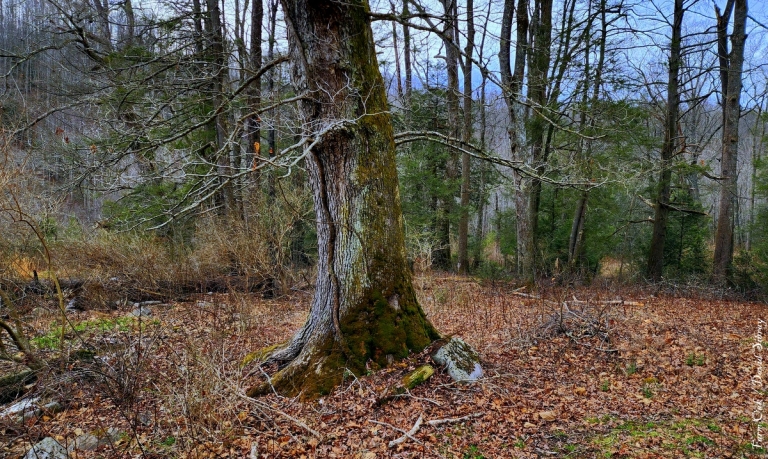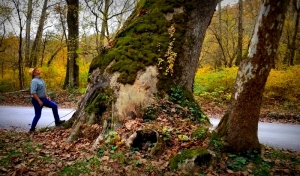
BARKERS RIDGE, W.Va. — You might have heard that moss grows only on the north sides of trees. That bit of lore originated as a way to help travelers navigate strange forests. The mossy north face of a tree, or so it was said, could serve as a natural compass.
It is true that moss is most likely to grow on the north sides of trees, but it's not always the case. Moss can grow almost anywhere. Where it's most likely to grow can also depend on where you live. In the northern hemisphere, it grows on the north side of trees, away from where sunlight lingers longest. The north side of a tree is the most shady, and moss grows best in the shade, which is usually more humid and moist.

Mosses thrive under these low-light conditions because moisture is essential to their survival. They are non-vascular and don't depend on roots to absorb water from the soil. They wick moisture and nutrients from their environment and grow practically anywhere that's wet enough.
Trees, in particular, provide an excellent growing surface because bark has a lot of grooves. Few other plants, apart from vines, can grow on a vertical surface like a tree trunk, so mosses don't have much competition for growing space.
However, the rules about where moss grows run a little more loosely in West Virginia. There are the matters of the mountains and forests. Sunlight is scarce beneath the forest canopy, and as a result, moist conditions can be met almost anywhere there, no matter which direction a tree faces.
Also, some north-facing slopes in mountainous West Virginia rarely see daylight. Among their cliffs and grottos, mosses are apt to carpet everything. Rocky overhangs along north-facing waterfalls always make for good moss gardens.
Gardeners and homeowners may find it helpful to note that mosses don't siphon water or nutrients from their hosts, so they can grow on rocks, walls, and trees without causing harm.
No matter where you’re transplanting the moss, do so when the soil is moist but not muddy. Just after a light rainfall is best. Moisture helps loosen the roots and ensures that moss won’t dry out quickly. If you’re collecting moss, it’s best to do so in spring and early summer. Late summer brings droughts that stress the plants, and fall and winter bring frosts and snow that may kill mosses or drive them into dormancy.
Sign up to receive of FREE copy of West Virginia Explorer Magazine in your email weekly. SIGN ME UP!




























